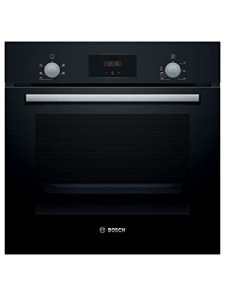The Rise of Built-In Ovens: A Seamless Approach to Modern Cooking
In contemporary kitchen areas, where style visual appeals blend flawlessly with functionality, one device stands apart as a true video game changer: the built-in oven. As house owners and chefs alike continue to look for innovative options that improve their cooking experience, built-in ovens have become significantly popular. This short article checks out the benefits, factors to consider, and patterns surrounding built-in ovens, highlighting why they are an essential function in contemporary cooking spaces.
What is a Built-In Oven?
A built-in oven is a kitchen appliance created to be integrated into the cabinetry of a kitchen area rather than standing alone. Unlike conventional freestanding ovens, which can be moved and placed anywhere, built-in ovens can be found in numerous designs and sizes to fit specifically within designated spaces. Offered in single or double setups, these ovens offer a structured look that matches modern-day kitchen designs.
Advantages of Built-In Ovens
1. Space-Saving Design
One of the most attractive benefits of built-in ovens is their space-saving design. By integrating the oven into cabinetry, you can free up important counter and flooring space. This is especially useful in smaller kitchens, where optimizing space is necessary. Built-in ovens can be set up at eye level, making them more accessible and lowering the need to bend down.
2. Visual Appeal
Built-in ovens contribute to a smooth and cohesive cooking area design. Readily built in oven uk in different finishes-- such as stainless-steel, black, white, and custom-made cabinets-- they can blend seamlessly into the total decor. This visual appeal improves the kitchen's visual consistency and raises the area, developing a modern-day and advanced environment.
3. Boosted Functionality
Numerous built-in ovens come equipped with advanced cooking innovations, such as convection cooking, steam ovens, and smart functions. These enhancements permit for flexible cooking choices, making it simpler to attain professional-level outcomes in your home. Smart built-in ovens can even connect to Wi-Fi, allowing users to control the oven remotely, get notices, and access a variety of cooking programs and dishes.
4. Improved Ventilation
Due to the fact that built-in ovens can be integrated with kitchen hoods and ventilation systems, they can help preserve better air quality and lower cooking smells. This is specifically substantial for those who like to cook with aromatic spices and components, as an effective ventilation system can keep the kitchen comfortable and welcoming.
5. Modification Options
Built-in ovens offer a vast array of personalization choices to match private cooking styles and requirements. From professional-grade devices with several cooking modes to compact styles for smaller sized kitchen areas, homeowners can choose the oven that fits their particular requirements. Numerous producers likewise offer personalized front panels, allowing you to match the oven's look to your cabinetry for a really merged appearance.
Considerations When Choosing a Built-In Oven
While built-in ovens have numerous advantages, there are essential considerations to keep in mind before making a purchase:
1. Rate
Built-in ovens typically feature a greater cost tag than their freestanding equivalents due to their style and installation requirements. It's essential to consider both the cost of the oven and any additional costs associated with cabinetry modifications or installation.

2. Installation Requirements
Installing a built-in oven frequently needs professional support, especially if you need to customize existing kitchen cabinetry. Ensure that you think about any expenses related to setup, including labor and prospective cabinetry modifications.
3. Size and Dimensions
Before acquiring a built-in oven, determine the designated space precisely to ensure a proper fit. Built-in ovens come in different sizes and setups, so choosing one that aligns with your needs and kitchen design is vital.
4. Way of life and Usage
Consider your cooking routines and requires when selecting a built-in oven. If you often host big gatherings, a double oven may be more advantageous. On the other hand, if you have a compact kitchen area, a single-wall oven might be sufficient.
Trends in Built-In Ovens
The kitchen appliance market is continuously progressing, and built-in ovens are not exempt from emerging trends. Some current patterns consist of:
Smart Technology Integration: With the increase of clever home innovation, built-in ovens now often feature connectivity choices. This permits users to keep track of cooking progress and adjust settings through mobile apps.
Energy Efficiency: As sustainability becomes a priority, numerous makers are purchasing energy-efficient built-in ovens that lower energy intake while maintaining efficiency.
Multi-functional Designs: Built-in ovens now offer functions such as air frying, sluggish cooking, and steaming, providing adaptability that meets a large range of cooking methods.
Conclusion
Built-in ovens unquestionably represent a best mix of design, function, and convenience in today's kitchen areas. As more property owners go with this modern option, the focus shifts to producing a cooking space that is as aesthetically pleasing as it is practical. Whether you are constructing a new home or redesigning your kitchen, considering a built-in oven could raise your cooking experience and transform your cooking area into a trendy and practical haven. With a range of options offered and ongoing developments in innovation, built-in ovens stay a standout option for both beginner cooks and cooking lovers alike.
